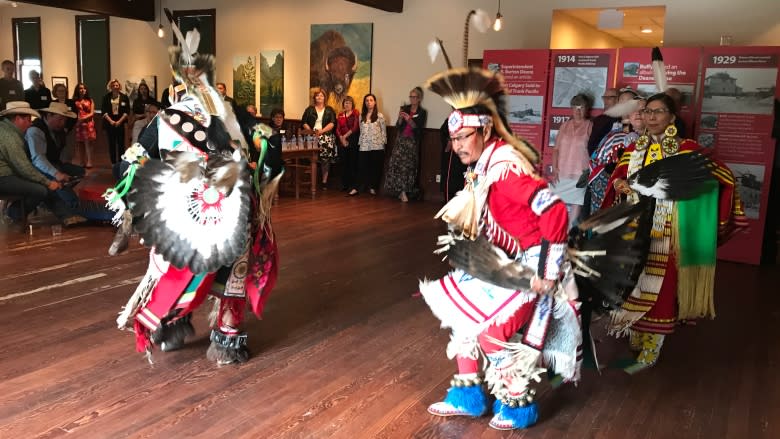Original Treaty 7 document on public display at Fort Calgary
Visitors to Fort Calgary can now see the original copy of Treaty 7.
The nine-page document has been kept in storage in Ottawa, but Library and Archives Canada agreed to loan it out for public display for the next four months.
"We brought Treaty 7 to Fort Calgary for our sesquicentennial project, to hopefully have a discussion about the last 140 years under the treaty but also the years prior to Confederation as well," said Fort Calgary CEO Sara Gruetzner.
"I think when we talk about a nation, we should be talking about everybody."
Treaty meant big changes
Treaty 7 was signed at Blackfoot Crossing, about 100 kilometres east of Calgary, on September 22, 1877.
Then part of the Northwest Territories, the treaty between the federal government and the First Nations of the region resulted in a number of changes.
It cleared the way for greater settlement of the area but the agreement also created the reserves which are still home to the Blackfoot, Stoney and Tsuut'ina peoples.
The federal government committed in the treaty to assisting Indigenous people by providing education and agricultural assistance as well as annual treaty payments in exchange for the First Nations ceding the land to the Crown.
For the First Nations, it was seen as more of a peace treaty and an agreement to share — not surrender — their traditional lands.
Earlier this year, Tsuut'ina Chief Lee Crowchild said he was pleased the treaty was returning to Alberta.
"This will create an opportunity to reflect on a treaty that guarantees our sovereign status, and gives us control over the air, water and land that has deep meaning for us," said Crowchild.
Controversy surrounds Treaty 7
The exhibit was unveiled on Monday night at a closed-door reception. Indigenous dancers and drummers were on hand for the event.
Besides the document itself, the display covers the history of the treaty and the controversies surrounding it.
For example, the exhibit outlines the inability of the interpreters at the treaty's signing to properly translate the meaning of specific words into several Indigenous languages.
Gruetzner said she hopes people take advantage of this rare opportunity to see the historic document — and think about the role it can play in the reconciliation process with Indigenous Canadians.
"Hopefully it captures Calgarians' attention, to come and see it and learn a bit more because, once you learn about it, you have a better understanding of who we are today and how we got here," said Gruetzner.
Visitors must pay to enter the interpretive centre at Fort Calgary.
Treaty 7 will be on display until mid-October, when it will return to Ottawa.



